Impulsive M1.5 erupts off the east limb, Earth under the influence of CH HSS
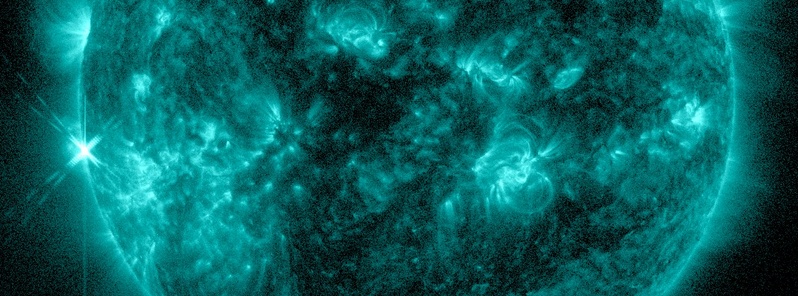
An impulsive solar flare measuring M1.5 at its peak time erupted early on December 13, 2014, from a region rotating around the SE limb. The event started at 05:13, peaked at 05:20 and ended at 05:25 UTC.
This new region shows a good potential for increased solar activity during the next 14 days as it transits the Earth side of the Sun.
Multiple C-class flaring was also observed originating from Regions 2227 (S04W65, Hsx/alpha), 2234 (N04W20, Dao/beta), 2236 (N30E55, Dao/beta), and 2237 (S15E48, Eso/beta) during last 24 hours.
Meanwhile, solar wind parameters continued under the influence of a positive polarity coronal hole high speed stream (CH HSS). Solar wind speeds ranged from 454 km/s to 696 km/s during last 24 hours (by 12:30 UTC today).
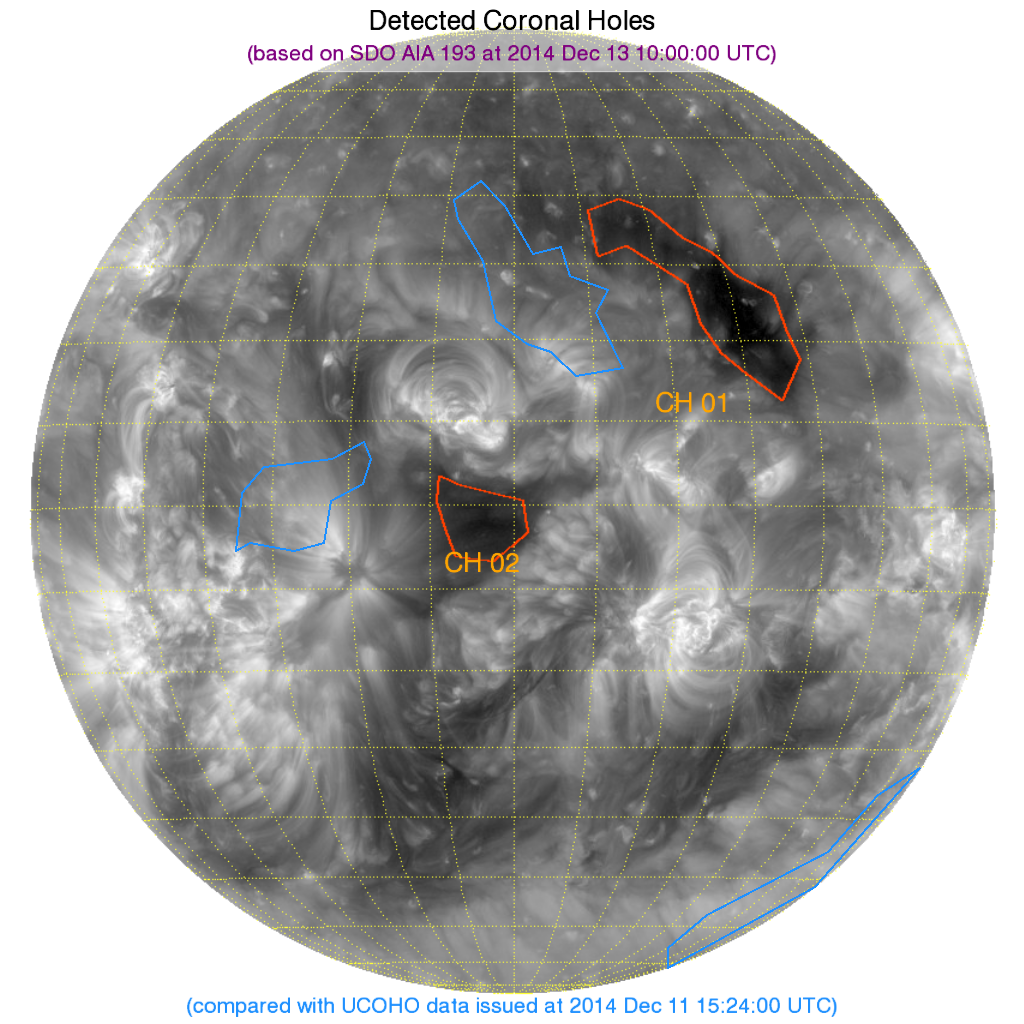

Solar wind parameters are expected to continue to be enhanced under the influence of a positive polarity CH HSS through December 13 – 15. Solar wind speeds are anticipated to be in the 550 km/s to 650 km/s range.
The geomagnetic field was at quiet to active levels with an isolated minor storm period observed between 12:00-15:00 UTC on December 12 due to SSBC/CH HSS effects.
It is expected to be at quiet to active conditions (Below G1-minor), with a chance for high latitude minor storm periods through December 13 – 15 as CH HSS effects persist.
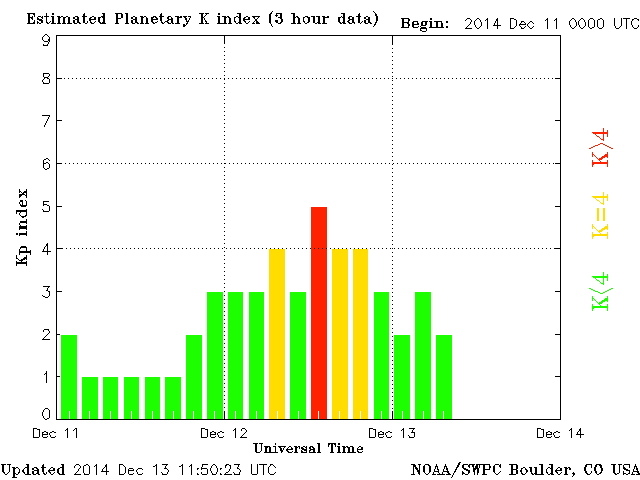
Space Weather Message Code: ALTK05
Serial Number: 761
Issue Time: 2014 Dec 12 1310 UTC
ALERT: Geomagnetic K-index of 5
Threshold Reached: 2014 Dec 12 1310 UTC
Synoptic Period: 1200-1500 UTC
Active Warning: Yes
NOAA Scale: G1 - Minor
Potential Impacts: Area of impact primarily poleward of 60 degrees Geomagnetic Latitude.
Induced Currents - Weak power grid fluctuations can occur.
Spacecraft - Minor impact on satellite operations possible.
Aurora - Aurora may be visible at high latitudes, i.e., northern tier of the U.S. such as northern Michigan and Maine.
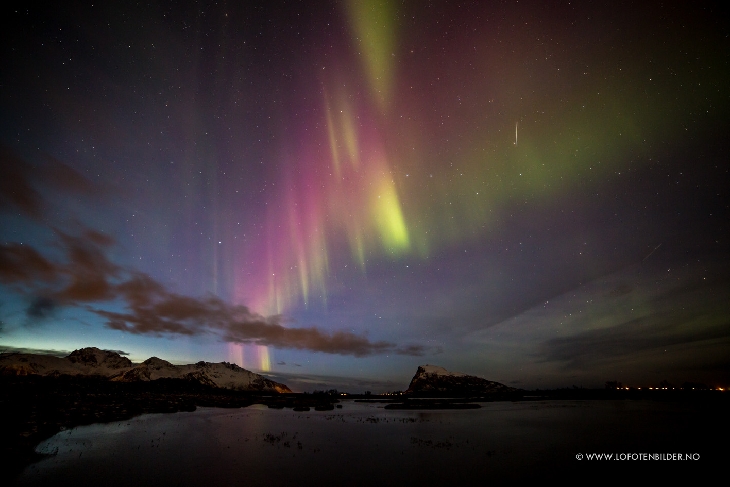
Taken by Eric Fokke on December 12, 2014 @ Lofoten Islands (via SpaceWeather). © Eric Fokke – www.lofotenbilder.no
Sunspots
Slight growth was observed in the intermediate area of Region 2230 (S15W25, Dac/beta) and new flux emergence was observed around the leader and trailing spots of Region 2237. The rest of the numbered regions were either stable or in decay.
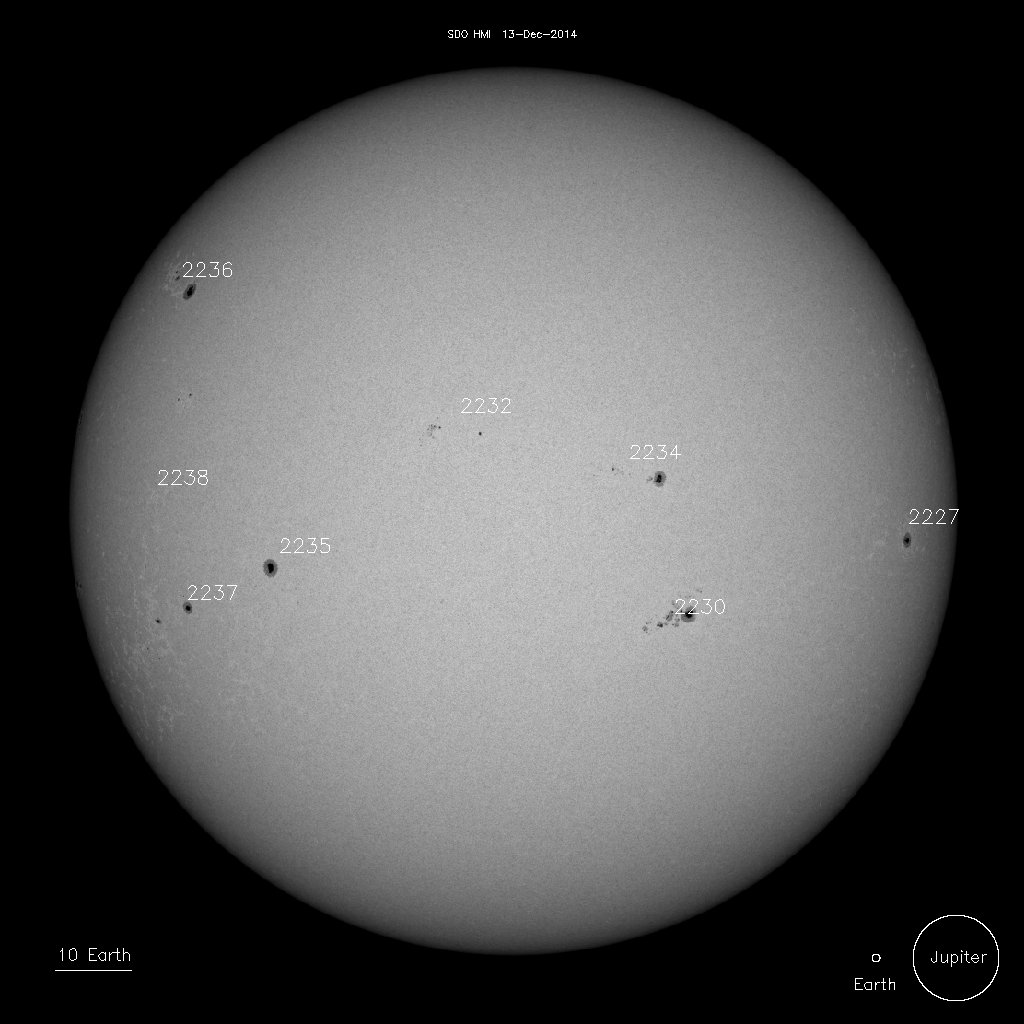
Sunspots on December 13, 2014. Image credit: NASA SDO/HMI
2227 – Alpha
2230 – Beta-Gamma
2232 – Beta
2234 – Beta-Gamma
2235 – Alpha
2236 – Beta
2237 – Beta
2238 – Beta
Featured image: NASA SDO / AIA 131 on December 13, 2014 at 05:25 UTC

Commenting rules and guidelines
We value the thoughts and opinions of our readers and welcome healthy discussions on our website. In order to maintain a respectful and positive community, we ask that all commenters follow these rules:
We reserve the right to remove any comments that violate these rules. By commenting on our website, you agree to abide by these guidelines. Thank you for helping to create a positive and welcoming environment for all.